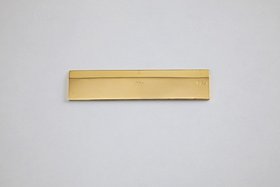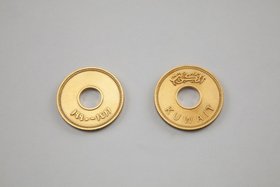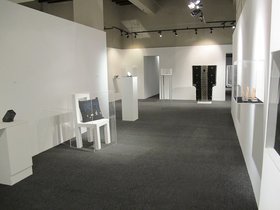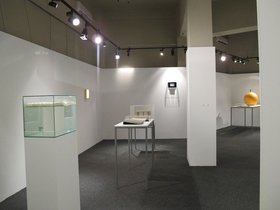Interviews
Geographic Gnomons
Ala Younis in conversation with Liane Al-Ghusain
In 1936, the Kuwait government began an initiative to bring in scores of teachers from Palestine to support their growing education system. A sizeable Palestinian pedagogical community was formed – however, by late 1990, almost the entire demographic, numbering 400,000, was either expelled or prohibited from returning to Kuwait due to the Palestine Liberation Organization's (PLO) ties with Iraq preceding and during the Gulf War.
In response to this unique history, curator and artist Ala Younis partnered with MinRASY Projects in Kuwait this summer to stage an intervention at the Museum of Modern Art, under the patronage the National Council for Culture, Arts, and Letters, State of Kuwait. In creating the Museum of Manufactured Response to Absence (MoMRtA), which presented 28 newly-commissioned artifacts, the curators explored questions such as: What would it look like if Palestinian and Kuwaiti culture were hybridised? And how can we, in 2012, revive this unique era? In this interview for Ibraaz, writer Liane Al-Ghusain talks to Younis about unearthing this complex history and the process of commissioning 28 artworks by a number of international artists for this 'nomadic' museum.
Liane Al-Ghusain: To begin with, let's talk about the narrative of Palestinians in Kuwait. There aren't many quality and easy to access resources on the subject, so how did you pass along information about the subject to the artists you commissioned?
Ala Younis: It was a two-way learning process. We found a few resources, printed and online, mostly in Arabic, many of which focused or talked about Palestinians in Kuwait between 1990 and '91. So we started with a very general introduction to the artists. Then they started to ask questions and together we looked for answers. In his work Ruler, a golden ruler featuring two monumental dates for the Palestinians (1948 and 1990), artist Cevdet Erek was asking about poignant dates, splits and shifts, measured out on a basic classroom item. For the music record we produced, which features the Kuwaiti singer Abdallah Ruwaished's song 'Jahra Street' on it [a song about a chance meeting in a luxury goods mall], we were looking into famous bands and the type of Palestinian folklore that moved into and appeared in Kuwait during that time. And so on. We did many interviews, I read many blogs and we had very long chats with the artists.
LAG: How has your view of the Palestinian community moving into Kuwait in the mid-1930s and then being kicked out in 1991 changed? Any specific quotes that shocked or enlightened you?
AY: There were some discouraging generalisations being made about the history of Palestinians in Kuwait. But gauging the depth and uniqueness of this community was probably the most enlightening part of the process. The way people try to write or comment on history is still very much dependent on the 'last move' or last act. And here I am, talking about Palestinians and Kuwaitis.
LAG: I guess the future of the Palestinian diaspora is still very open-ended. But what of the Kuwaiti community? What were the reactions from the audience and the patrons in Kuwait to the exhibition?
AY: I was really very pleased, in fact moved, by the way the Kuwaiti and Palestinian audiences reacted to the exhibition during the opening. When I was giving the tour, they were listening, engaging, and adding their own comments – though there were some moments of silence, and lifted eyebrows, followed by relief, at the way the story was told.
LAG: Kuwait has a very performative culture. Can you give an example of a specific work they reacted to?
AY: During the tour, when we were in front of the work Coin (2012) by Amman-based goldsmith Mesrop – which features two coins, the Kuwaiti fils and the Palestinian qursh both with their centres punched out, in a comment on the way Palestinians in Kuwait donated five percent of their salaries to the PLO – and I was explaining how the Kuwaiti coin became like a Palestinian equivalent. I am not sure how or what happened but there was a moment where everyone was just waiting for me to finish the sentence in order for them to give their reaction. It's not an easy piece.
LAG: It becomes more complicated when economics are involved and the museum objects suggest that the Kuwait economy was originally and essentially driven by the Palestinians – I'm glad you didn't shy away from this. Were there difficulties with the patrons in relation to the economic subject?
AY: We didn't have experience any problems.
LAG: I guess that is a leading question. I want to know about censorship, and if there was any intentional neutralisation of the objects.
AY: There hasn't been any censorship – we wouldn't know what the limits are in fact and while perhaps we weren't sure about certain items, no one interfered or changed a text, for example. In fact, the exhibition is extended for one more month now. I was pleased with the opening crowd, which comprised an official delegation, Kuwaiti artists and gallerists, the patrons, some Palestinians in Kuwait, Lebanese and Egyptians, and also some westerners.
LAG: I'd like to know how the exhibition links to your past work as well as the MinRASY mission.
AY: In regards to the MinRASY projects in Kuwait, so far the idea is to have a series of interventions in public spaces around the country. The first three projects appeared with minimum advertisement and without opening ceremonies. They appeared, almost naturally, on billboards in Hawalli (Tarek ala Duwwar, by Tarek Al-Ghoussein in 2011), or an exhibition booth in a travel expo (United Palestinian Airlines, by Khalil Rabah, also 2011), or a film and lecture in a graduate's society.
LAG: Almost naturally, I like that. Very much like the Palestinians in Kuwait.
AY: Exactly. Then came the museum, which had a different approach for me. I am always attempting to learn more, through art production, on how to reinterpret Palestinian history and also to look at the position of individuals in collectives and their position in a politically and economically driven world.
LAG: Yes, I realised there was a great diversity in the artists you presented – from sports commentators, to a ten-year-old, to European artists.
AY: True. First of all, the Palestinian cause (and its supporters or those who are involved) has been, and continues to be, international, so the idea was not to focus on nationality or profession but rather to concentrate on objects. Each object in the MoMRtA is the result of a long process of research, questioning, negotiation, industry, material and cost. We insisted on each object to fall somewhere between the imagined and the impossible. You have to read the object and not the artist/maker, but then you have to read the whole collection of objects before you finalise your reading of the object; then you have to interpret the collection (and its movement) in relation to the context. The diversity of the participants also diversified the research and production processes. We did/do not have the same point of departure for everyone or thing.
LAG: It seemed like the materiality of co-existence, diaspora and trauma was approached from so many different angles.
AY: Yes, so as not to put forward the standard narrative about Palestine, but rather to propose one that is related to a specific diaspora, to an almost complete society. We wanted to extend the existence of the Palestinian community in Kuwait beyond the time frame of that existence and part of the process of doing this was to have the exhibition made in and to look as if it were from 2012, a contemporary show with present-day significance. This is why I insist that this is not a fictitious museum.
LAG: I have definitely never seen the Museum of Modern Art in Kuwait look more like '2012' than at the MoMRtA. And it also felt very much like a natural history, not a fabricated one.
AY: This was the intention and this is why we had to work with artists and non-artists. Also, the museum did not reproduce objects that were lost or appeared in the aforementioned years, but objects that are made to reference or reflect on the absence of this time, its people, its objects. It's interesting to think about how to read part of the Kuwait history itself within such a project.
LAG: There were some really interesting themes in this exhibition, namely the concerns of Palestinians that moved to and lived in Kuwait but also the spirit of consumption that has taken over modern Kuwaiti audiences. You really reached out to them in a way that they could directly identify with and yet at the same time you encouraged them to read the subtext.
AY: It was a smaller society that met on so many levels and in so many places. When consumer items appeared, they were known about and acquired, the same with TV and radio. And for many Palestinians there was no place to go back to in the summer, so they very much invested in their homes and cars because that was home for them.
LAG: I would like to know how the intervention has inspired your upcoming work. What, if anything, are you carrying over to your next ventures/creations?
AY: First of all, we will be taking MoMRtA to other venues and locations, and each time we are going to revisit the installation plan and also some items in the collection. I now know more about the relations between Palestine and Kuwait, and diaspora, than that I thought I would a year ago. My next project is a continuation of an older one on soldiers, but as for Palestinians in Kuwait, and for Kuwait, there are some things that I would like to look further into.
Ala Younis is an independent artist and curator based in Amman. Through art, film, and publication projects, Younis investigates the position of individuals in a politically driven world, and the conditions in which historical and political failures of the collective become personal ones. In 2011, Younis curated Maps, Timelines, Radio Programmes for La Galerie, Contemporary Art Center in Noisy-le-Sec, Paris, Out of Place with Kasia Redzisz for Tate Modern, London, and Darat al Funun, Amman, and Momentarily Learning from Mega-Events for Makan, also Amman. Her installation Tin Soldiers was prdocued and shown in Home Works 5', Beirut, 2010, and in the Istanbul Biennial, 2011. In 2012 she was selected by ArtReview as one of the art world's 'Future Greats 2012'.
View an interview between Ala Younis and Omar Kholeif on curating as part of Ibraz Talks at Art Dubai in 2013, here.
Ala Younis is also a participant in the Kamel Lazaar Foundation Projects – view her recent work, UAR, here.



















